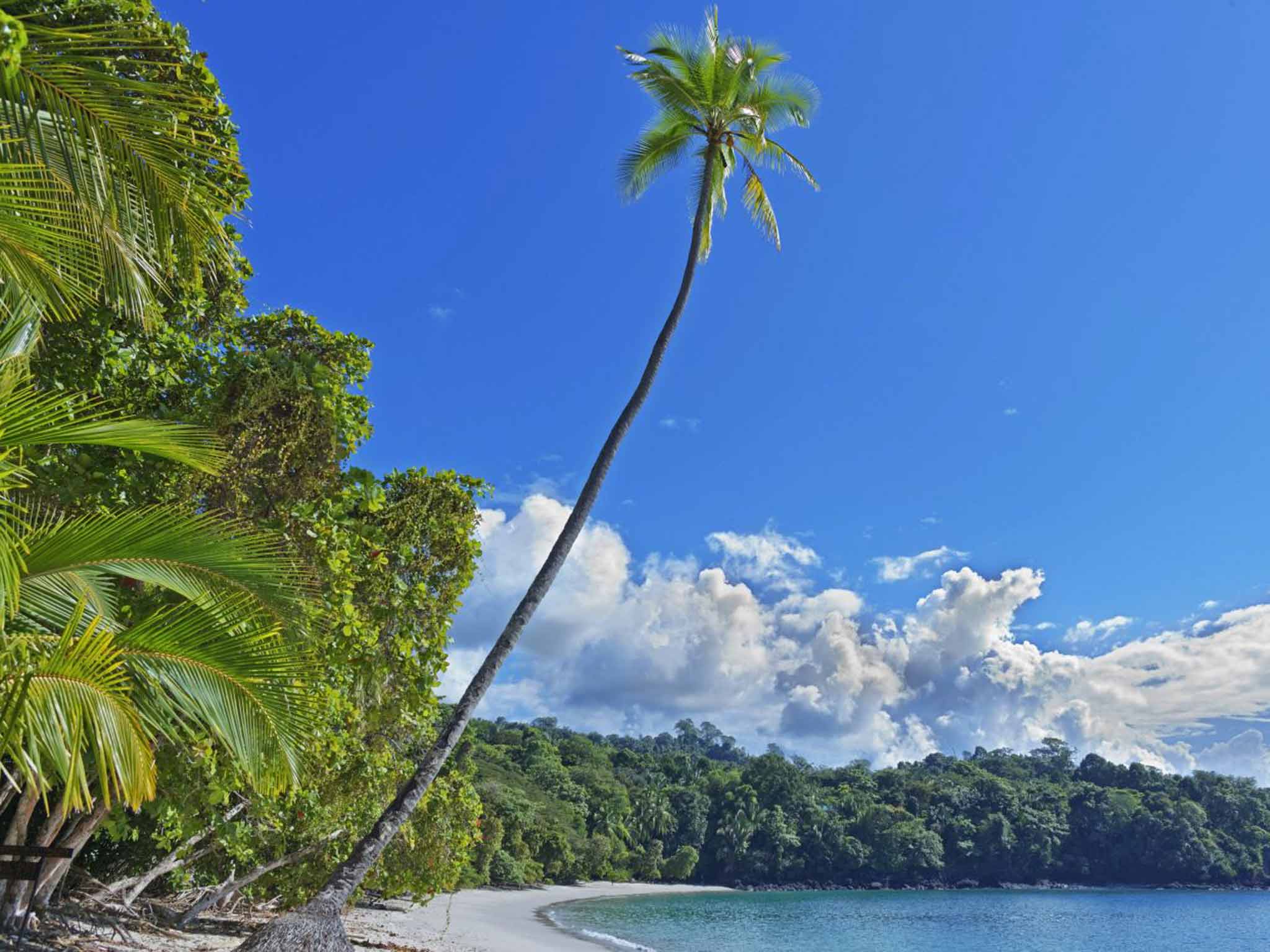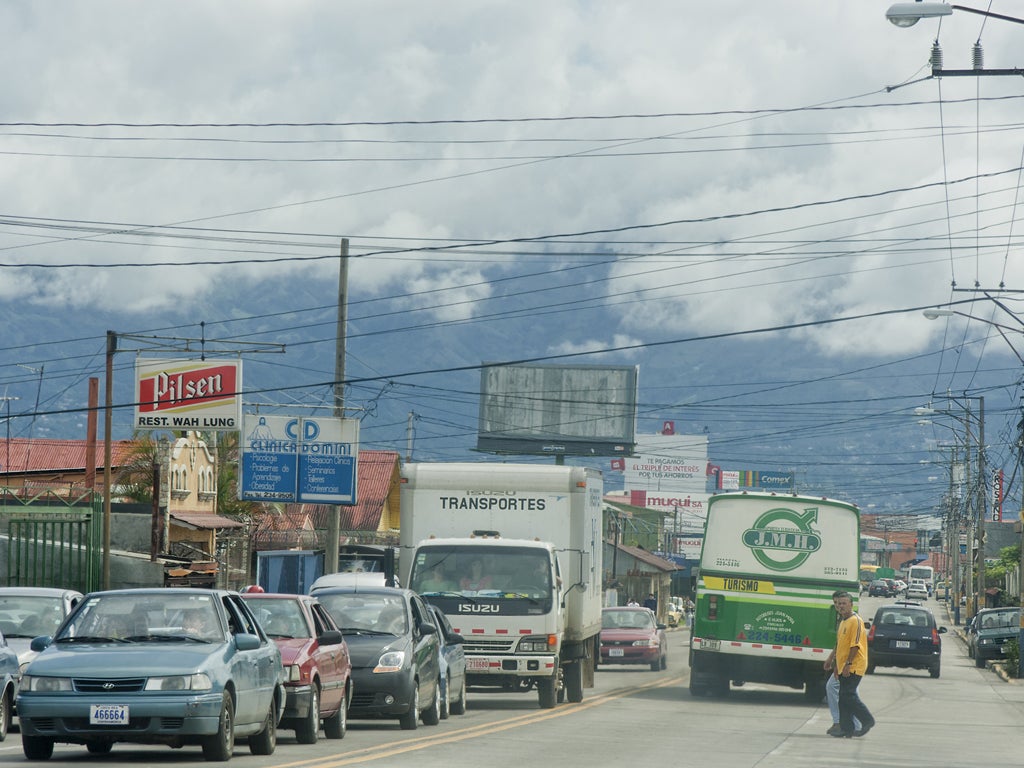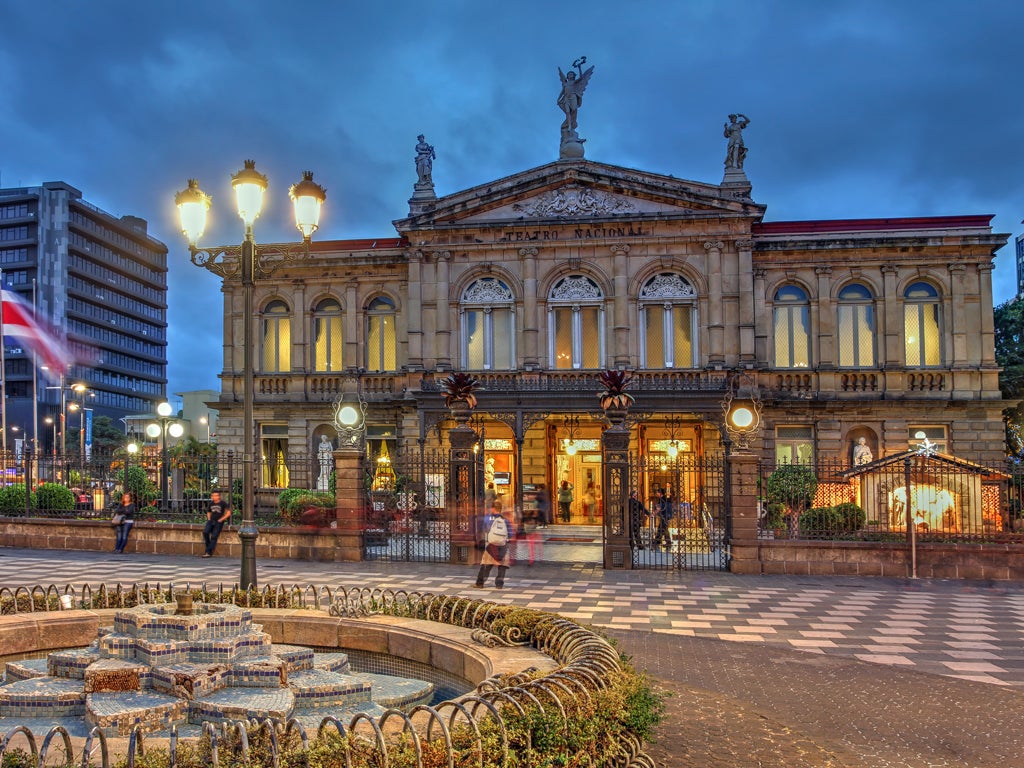Costa Rica: new flights open up this Central American beauty
The way to San José and beyond will soon become easier, with new non-stop flights that will make the country's astonishing wildlife, beaches and volcanoes more accessible

Your support helps us to tell the story
From reproductive rights to climate change to Big Tech, The Independent is on the ground when the story is developing. Whether it's investigating the financials of Elon Musk's pro-Trump PAC or producing our latest documentary, 'The A Word', which shines a light on the American women fighting for reproductive rights, we know how important it is to parse out the facts from the messaging.
At such a critical moment in US history, we need reporters on the ground. Your donation allows us to keep sending journalists to speak to both sides of the story.
The Independent is trusted by Americans across the entire political spectrum. And unlike many other quality news outlets, we choose not to lock Americans out of our reporting and analysis with paywalls. We believe quality journalism should be available to everyone, paid for by those who can afford it.
Your support makes all the difference.As the Pacific flirts with a dazzling beach of silky white sand, a few yards inshore a monkey swings playfully from a palm to taunt the tourists. Deeper into the pocket-sized Manuel Antonio National Park, the traveller can find dramatic waterfalls and rare creatures such as the three-toed sloth. Later, as the sun sets over the ocean, you can resume a delightfully slothful existence in a high-end resort or backpackers’ hostel.
This year, 54,000 British travellers are expected to visit Central America’s most popular nation. Next year, Costa Rica becomes even more accessible, thanks to British Airways (0344 493 0787; ba.com) returning to the Gatwick-San José route. The link that starts on 4 May next year will bring 20,000 more people to enjoy a country where the surf is high, the volcanoes are raucous and the prices are low.
Costa Rica has long been seen as the “safe” location in a dangerous region. “You breathe fear in the air in Central America,” wrote Martha Gellhorn during the massive political upheavals of the 20th century. Yet in 1949, the Costa Rican army was abolished. This apparent bout of pacifism has been augmented by the nation’s repertoire of well-protected natural wonders. Costa Rica it is more organised than neighbouring Nicaragua, to the north and west, and less febrile than Panama, to the east. But safe does not equate to dull and there are extraordinary adventures to be had on the “rich coast”, considering it is a country barely bigger than Denmark.
Much has changed since British Airways last flew direct to Costa Rica 15 years ago – especially in terms of innovative accommodation. In the past year alone, a new “boutique hacienda,” Alta Gracia has opened in the mountains of Pérez Zeledón – south-east of the capital, and about halfway to Panama (00 506 2105 3080; altagraciacr.com). It offers 50 casitas, a well-appointed spa and the chance to ride the property’s own horses around the extensive estate (doubles from US$367 (£244) per night, including breakfast and bubbly).
And, if you prefer everything organised, Thomson (020 3451 2688; thomson.co.uk) plans an extensive programme of package holidays from November. An all-inclusive week at the Villas Sol Resort at Playa Hermosa, departing 2 November, costs £838 and includes flights from Gatwick.
Independent travellers are more likely to meet the friendly locals. The five million people are much less heterogeneous than in most other Latin American countries – about two-thirds of the Costarricenses are of European descent. Of the very few indigenous Amerindian people, most live on the Atlantic coast – where they are joined by a significant English-speaking black community, the descendants of Jamaican immigrants. Two other notable minorities: a long-established Chinese community, who in smaller settlements are often the restaurateurs; and retired North Americans and Europeans, enjoying the warm sun and relative calm.
The country may in places resemble a retirement annexe of California, but its wild side is never far away. Journey Latin America (020 8747 8315; journeylatinamerica.com) offers a 15-day Costa Rica Wildlife Discovery trip featuring birdwatching in the highlands, watching and whales on the Pacific, and guided hiking in Corcovado National Park. The £3,102 cost includes internal transport by road, sea and air, accommodation and some meals, but not international flights.
For close encounters with a sloth, look no further than the Buttercup Inn, which doubles as the Sloth Sanctuary (00 506 2750 0775; slothsanctuary.com), close to Limón on the Atlantic. It featured in the Animal Planet documentary, Meet the Sloths. Or experience Costa Rica’s highlights on a four-week Central American overland truck trip from Antigua Guatemala to Panama City by Dragoman (01728 861133; dragoman.com); basic cost £1,410, kitty $580 (£387), air fares extra.
Make the most of the stunning views, because food and drink are unlikely to be highlights in Costa Rica. The national dish is gallo pinto – rice and beans, served for breakfast, as well as lunch and dinner. Beef, pork and chicken are the meaty staples, while ceviche (marinated raw fish) is the best choice on the coast. For alcohol, venture no further than the excellent local beer (Bavaria, Imperial, Rock Ice). Fresh fruit juice is the alluring alternative in this close approximation to lotus land – especially at dawn, if you have the good fortune to wake to a cacophony of creatures that sound like a chorus of mobile-phone ring-tones.
From cloud forest to Pacific shore, and colonial heritage to chic resorts – if you can’t find something to suit you in Costa Rica you should probably hand in your passport.
On the road
Threading through the seismic scars on the waist of the Americas, the Pan-American Highway adopts the name Carretera Interamericana, and serves as Costa Rica’s main street. The world’s longest thoroughfare, at 15,000 miles, cuts right across Costa Rica, from the scruffy Nicaraguan border crossing of Peñas Blancas, to chaotic Paso Canoas on the Panamanian frontier.
In the capital, the highway wriggles through a chicane of homes, factories and once-grand public buildings. Its identity for this stretch of the journey is Avenida 0 – Avenue Zero. The road leaving San José is a fast dual carriageway, but about 30 miles out it hits the mountains and to clear this barrier, it zigzags and spirals to the summit of Cerro de la Muerte, the “hill of death” (a natural enough name when you see how some of the locals drive). You pass a café called Soda Everest and a settlement called Siberia, yet the terrain shares the corrugated look of parts of the Scottish Highlands.
The highway veers from south-east to due west, then wiggles down to the sleepy settlement of Palmar Norte before it regains its composure for the race down to Panama. If you take the Pan-American Highway in only one country, make it Costa Rica.
Geodyssey (020-7281 7788; geodyssey.co.uk) sells a number of self-drive itineraries, starting at £995pp for an 11-day trip, excluding flights.

Volcano live
Costa Rica’s off-road options for adventure are as wide as your own imagination, but witnessing the natural son-et-lumière of Arenal, an active volcano that flares and roars like a furious dragon, is probably the highlight.
Central America is built on a tangle of geological fault lines, and the restless earth is constantly seething below the surface.
Arenal is the liveliest location, and a five-star resort stands ambitiously close – 1.7 miles – to a mountain that constantly rumbles and smoulders. The Arenal Observatory Lodge and Spa (00 506 2290 7011; arenalobservatorylodge.com) was originally built to allow scientists to study Arenal’s behaviour, and remains the ideal viewpoint. It has seven miles of biking, riding and hiking trails through the surrounding rainforest.
The budget option, especially for families, is its budget annexe – La Casona – which offers free stays for under-12s when parents pay $79 (£53) for a room, including breakfast and a guided morning hike.

City life
San José is on the same latitude as Cartagena in Colombia, and shares some characteristics with that lovely city: a large and attractive cathedral; intriguing museums; bustling markets; and a predisposition to the outdoor life. However, you should manage your expectations: unlike Cartagena, San José has few colonial trappings, and few visitors would say it is the highlight of their stay. Nevertheless, you are likely to end up passing through the capital, and you should try to make the most of it.
Check into the Casa de la Tias (00 506 2289 5517; casadelastias.com), an elegant five-room hideaway in a safe and quiet area of the capital; a double room costs from $113 (£74), room only.
The capital’s premier sight, the Gold Museum, has some astonishing pieces created before the Europeans arrived.
Adjacent is the lavish Teatro Nacional, a grand venue out of step with the rest of the capital. Also, a visit to the Museo Nacional will prepare you for the wonders that await beyond the city limits.

Surf’s up
The ocean adjoining Manuel Antonio National Park on the central Pacific coast is an excellent place to learn to surf, with gentle waves.
The MASS surf school and camp, based in nearby Quepos, offers lessons at Manuel Antonio beach. Three-hour group lessons cost $65pp (£43) and include transportation and equipment (00 506 2777 4842, manuelantonio surfschool.com). Stay at the Wide Mouth Frog Hostel (00 506 2777 2798, widemouthfrog.org), where a dorm bed costs $12 (£8) a night.
For all-inclusive deals, head 40 minutes down the coast to the resort of Dominical. A local surfer, Cesar Valverde, has started the Costa Rica Surf Camp (00 506 8812 3625; crsurfschool.com). A six-night package including transfers from San José airport and five two-hour surf lessons for $1,245 (£830).
Tamarindo, on the north-western Nicoya Peninsula, is the most developed surf spot. Highly-rated Kelly’s surf shop charges $50 (£33) for lessons. To book, email kellysurfshop@gmail.com.
Deep south
The far south is where Costa Rica feels most like the tropics gone to seed – with the exception of Golfito, a failed banana port turned duty-free zone. Yet inland, and across the Golfo Dulce on the Osa Peninsula, there are some lovely places to stay and explore.
Four miles off the Pan-American Highway, the Austrian-funded Esquinas Rainforest Lodge is a hotel that, for once, deserves the prefix “eco-” (00 506 2741 8001; esquinaslodge .com). The cabins are built from fallen trees, the roofs thatched with palm and there’s no air conditioning.Water for the pool comes from a spring in the rainforest. Staff are from the nearby village of La Gamba. with preference given to parents with young children to support. All meals are included in its $294 (£196) double-room rate; the food is grown around the lodge.
Lapa Rios (00 506 2735 5130; laparios.com) is a luxurious competitor, in a 1,000-acre rainforest reserve on the Osa Peninsula, where you encounter monkeys, toucans and scarlet macaws. The rates here are much steeper, rising to $940 (£626) for a double, all inclusive.
Travel essentials
Getting there
New BA flight start in May 2016 as twice weekly, then increase next winter to three times. For the lowest fares of £687 return, book early.
If you want to travel sooner, you are likely to need to change planes in the US – with Miami, Atlanta, Houston and New York the most common connection points. Fares in the next few weeks are £1,000-plus return; prices fall to around £700 if you can wait until November. Flying via Madrid on Iberia avoids American bureaucracy but is more expensive.
Getting around
Given the state of the roads and poor driving standards, flying is the best way to cover longer trips within Costa Rica. Nature Air (00 506 2299 6000; natureair.com) is the main domestic airline. Between San Jose and Quepos, for example, a tricky four-hour drive becomes a scenic half-hour flight; one-way fares from $66 (£44) .
The main form of terrestrial transport is the bus, and the first rule of bus travel in Latin America applies in Costa Rica: always choose the best class of vehicle you can afford.
Very little remains of Costa Rica’s railway network apart from a couple of tourist trains from San Jose.
More information
visitcostarica.com
Additional research by Eleanor Halls
Join our commenting forum
Join thought-provoking conversations, follow other Independent readers and see their replies
Comments